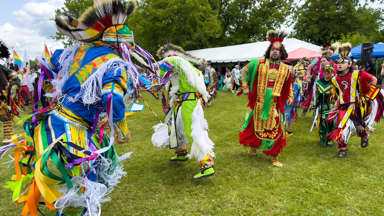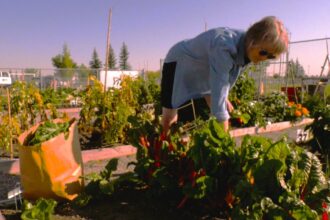Drumbeats echoed across the St. Mary’s First Nation grounds this weekend as hundreds gathered to celebrate the 25th anniversary of the Sitansisk Powwow, a milestone event that has grown from humble beginnings to become one of Atlantic Canada’s most significant Indigenous cultural celebrations.
The three-day gathering, which concluded Sunday, featured an impressive array of traditional dancers adorned in vibrant regalia, master drummers, and artisans from across Turtle Island. Participants traveled from as far as British Columbia and the American Southwest to take part in this quarter-century commemoration.
“Twenty-five years ago, we started with just a few drums and maybe fifty dancers,” explained Elder Joseph Sabattis, who has attended every powwow since its inception. “Today, we’re seeing thousands of visitors and hundreds of dancers. It shows how our traditions aren’t just surviving—they’re thriving.”
The powwow grounds buzzed with activity as spectators moved between the central dance arena and rows of vendor stalls offering traditional crafts, medicines, and food. The air carried the aromatic blend of sacred medicines, sweetgrass and cedar, alongside the tempting scent of fresh bannock and moose meat stew.
Chief Allan Polchies Jr. of Sitansisk Wolastoqiyik (St. Mary’s First Nation) emphasized the powwow’s role in cultural preservation and community building. “This gathering represents resilience,” he told CO24 Canada News. “It’s a living testament to our ancestors who maintained these traditions despite attempts to eradicate them. Now we share them proudly with everyone who wishes to learn and participate.”
The event serves multiple crucial functions beyond celebration. It provides economic opportunities for Indigenous artisans and knowledge keepers, offers educational experiences for non-Indigenous visitors, and crucially, connects younger generations with their heritage.
Seventeen-year-old jingle dress dancer Melissa Francis exemplifies this connection. “My grandmother taught me to dance when I was five,” she said while adjusting her regalia of 365 hand-rolled metal cones that create the distinctive sound of the jingle dress. “When I dance, I feel connected to everyone who came before me. It’s not just steps—it’s our history in motion.”
The powwow’s growth reflects broader changes in Canadian society. What began primarily as an internal community celebration has evolved into an opportunity for cross-cultural understanding. This year’s event drew record attendance from non-Indigenous visitors eager to experience and learn from Wolastoqey traditions.
“We welcome everyone with open hearts,” explained powwow coordinator Sarah Perley. “These gatherings have always been about community—and our community extends beyond any one nation or people. The circle is always open to those who come with respect.”
Economic impact analyses suggest the annual powwow generates approximately $1.2 million for the local economy through accommodation, food services, and direct purchases from vendors. This year’s silver anniversary edition is expected to exceed previous figures substantially.
Provincial officials, including New Brunswick’s Minister of Tourism, attended Saturday’s grand entry ceremony, acknowledging the powwow’s cultural significance and economic contribution to the region.
The 25th anniversary also featured special programming highlighting historical connections. A photo exhibition chronicled the powwow’s evolution from 1999 to present day, while storytelling sessions allowed elders to share memories of earlier gatherings.
As the final honor songs concluded Sunday evening and dancers made their final circuits of the arena, conversations already turned to next year’s gathering. Many participants expressed hope that the traditions showcased during this milestone celebration would continue strengthening for generations to come.
“Twenty-five years is significant, but it’s just the beginning,” reflected Chief Polchies as drummers played the closing song. “Our ancestors maintained these practices through centuries of challenge. Now we’re ensuring they’ll continue for centuries more.”
As Canadians increasingly recognize the importance of Indigenous cultural revitalization in the journey toward reconciliation, events like the Sitansisk Powwow provide essential opportunities for both celebration and education. The question remains: how might these twenty-five years of cultural resilience inspire broader societal reflection on the ongoing work of preserving Indigenous knowledge systems for future generations?










